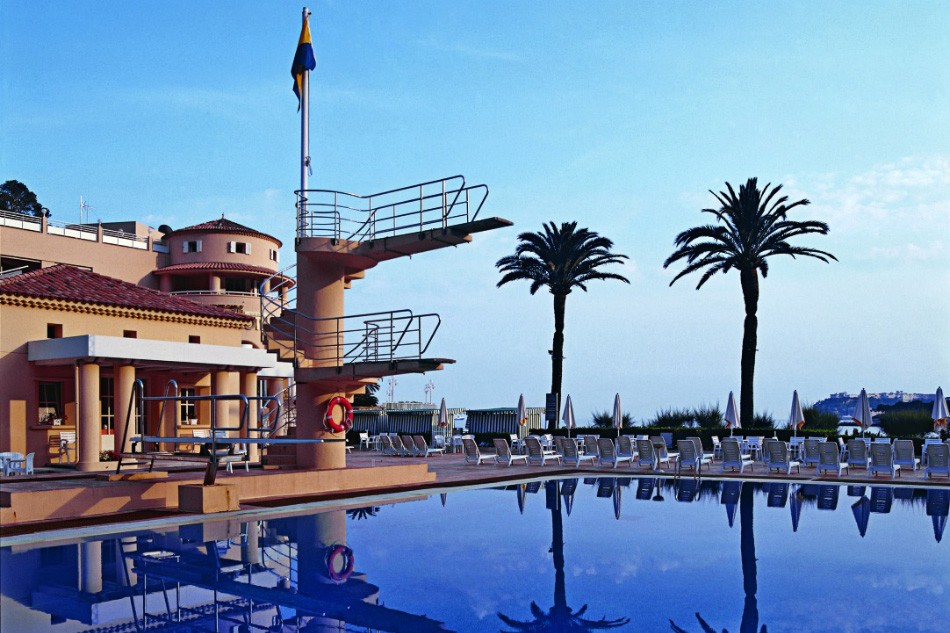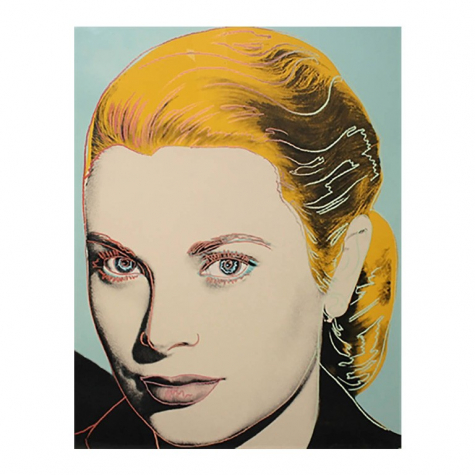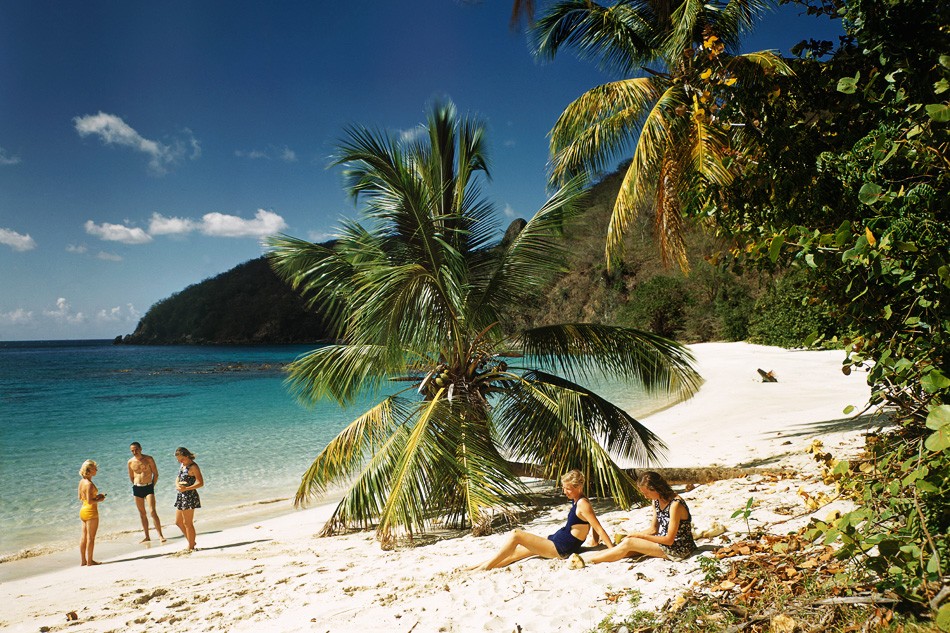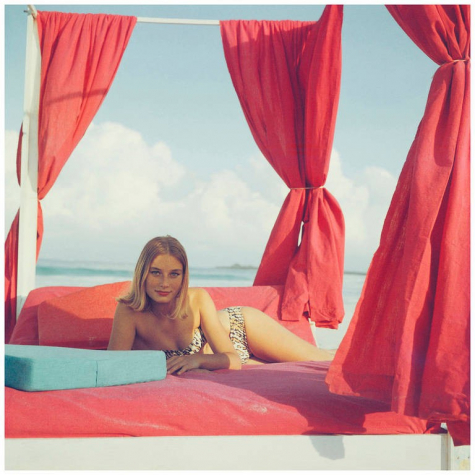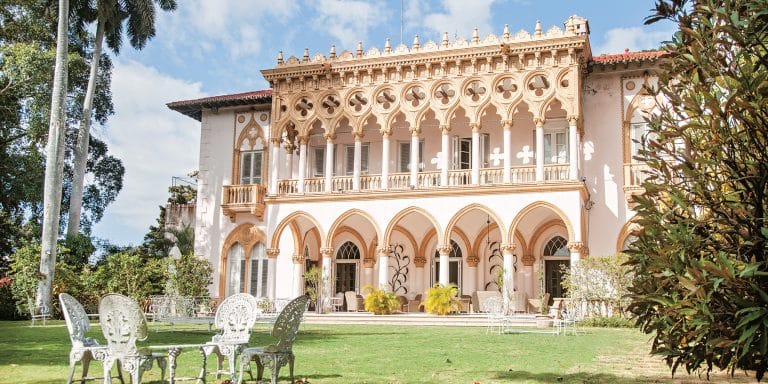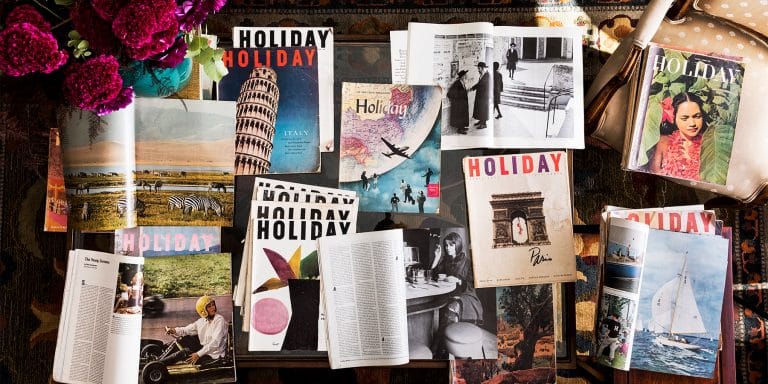
December 2014New books by Hermes Mallea and Pamela Fiori delve into the bygone glory days of two different locales. Top: After retiring to Barbados in 1966, English set designer Oliver Messel went about renovating the island’s historic homes for well-heeled clients; he completed Fustic House in 1969.
Some books transport us with words, others with photos. Two recently published volumes, each focused on a different desirable pocket of the world, do both: In the Spirit of Monte Carlo (Assouline; $45) by Pamela Fiori, former editor in chief of Town & Country and author of three similar books on Capri, Palm Beach and St. Barths; and Escape: The Heyday of Caribbean Glamour (Rizzoli; $60) by Hermes Mallea, an architect and author whose last book celebrated the stately homes of his native Havana. Though one volume is about a small city within a tiny country bordered on three sides by France, and the other is about a string of sandy sovereign island nations dotting the Caribbean Sea, they both depict some of the last century’s most sought-after playgrounds of the rich and powerful. Indeed, many of the same famous figures appear in both books: See a photo of John F. Kennedy and Jackie visiting Princess Grace in Monte Carlo in one, and then read about how the couple frequented Jamaica’s Round Hill resort in the other.
In the Spirit of Monte Carlo
By Pamela Fiori | Purchase Book
While the two locales are still highly regarded today, both books take a nostalgic look at heydays that have come and gone. As Fiori writes, Monte Carlo’s began in the 1870s, with Prince Charles III’s grand new casino, a last-ditch effort by the ruling Grimaldi family to save the principality of Monaco from bankruptcy. (Isolated on a rocky and seemingly uninhabitable promontory along the Mediterranean, the country was once referred to as “poor Monaco.”) The Prince’s first few attempts at opening a casino failed, until the brilliant French businessman Francois Blanc and his German wife, Marie, came along to take it over, introducing the newfangled roulette wheel. Over the next 20 years, with the opening of the legendary Hôtel de Paris, the constructions of roads and tunnels and the extension of the Cote d’Azur’s railway system, the creation of a magnificent opera house (built by Charles Garnier, architect also of the majestic Paris Opéra) and the continued success of the casino, the couple transformed Monte Carlo from a no-man’s-land into the wealth magnet it is today.
Starting from that time, the beaux monde ceaselessly flocked to Monte Carlo — “men with their wallets bulging” and women “fairly dripping in emeralds, rubies and diamonds and the latest Paris fashions,” writes Fiori. Lavish photos of this spectacle fill the book, depicting every era’s most prominent faces: Sophia Loren and Steve McQueen, Henri Matisse and Winston Churchill, Aristotle Onassis and Princess Diana, Beyoncé and Karl Lagerfeld.
Fiori’s own first visit to the fabled resort was in October 1967. “I crossed the Atlantic on a transatlantic ship called Raffaello on my first trip to Italy,” she said recently when talking about the book. “On board, I met a musician who raved about Monaco, particularly Monte Carlo, and dazzled me with stories about its beauty and glamour.” During her European travels that followed, Fiori made a point of visiting Monte Carlo. “It was just as this fellow said,” she continues. “Incredibly beautiful and impossibly glamorous.”
Naturally a large part of the book is devoted to Monaco’s ruling family, and in particular to the American actress Grace Kelly, who married Prince Rainer in 1956, changing from a Hollywood royal into an actual princess overnight. This fairy tale-like transformation, followed by an elegant life led in the public eye that was dramatically cut short by her death in a car accident in 1982 is a fascinating story no matter how many times it’s told, and especially so in this book, where it’s fleshed out with photos and a deeper look at Kelly’s life underneath its dazzling veneer.
According to Fiori, a frequent contributor to Introspective, while Monaco still attracts a wealthy, international crowd today, she says she believes “the heady days of Monte Carlo in the Gilded Age in the 1920s and in the 1950s, when Prince Rainier reigned with his wife, Princess Grace, can never be fully recaptured.”
Bring It Home
Get the look of Monte Carlo
Escape: The Heyday of Caribbean Glamour
By Hermes Mallea | Purchase Book
A similarly nostalgic sentiment underlies Mallea’s book. Each chapter explores a different Caribbean destination during its peak in popularity, starting with Miami in 1920 (“the birth of the American Riviera”) and stopping at, among other places, Jamaica, Cuba, the Bahamas and Antigua. The book concludes with a chapter devoted to Haiti, a particularly eye-opening inclusion, considering the associations many people have had with the country since the 2010 earthquake, and even before, with its troubling struggles against disease and poverty.
Indeed, Mallea writes, “People forget the exotic glamour that was once associated with Haiti.” It’s on full display here, however: See a 1975 Slim Aarons photo of the Boston Brahmin interior designer Lawrence Carleton Peabody II and his handsome family, who spent every winter in Haiti in a spectacular Port-au-Prince town house that Peabody began renovating in 1960. “It is very appealing here, mystical, not of this earth…some sort of strange fantasy,” said the designer’s then 20-year-old son Tom in a Town & Country article called “The Other Haiti.” (The article, Mallea points out, like the wealthy Americans flocking the country’s shores, looked the other way when it came to the atrocities being carried out by the successive Papa Doc Duvalier and Baby Doc regimes starting in the mid-1950s and lasting through 1986.) Another article, this one in the Los Angeles Times in the 1980s, detailed the Habitation Leclerc resort, the “sybarite’s cocoon” where “topless maidens luxuriate by the pool” and two leopards roamed the property. Opened in 1974 by New York nightlife impresario Olivier Coquelin, it went on to attract the likes of Mick Jagger, the von Furstenburgs and the Rothschilds.
The book’s other chapters are no less illuminating, particularly in bestowing individual identities upon the island nations that today blend together in the mind’s of many as a swirl of similar beaches and cookie-cutter resorts. To Mallea, a partner in the New York design firm M (Group), it was a revelation to do a deep-dive into the specific styles of each place’s buildings: “People don’t necessarily think ‘architecture’ when they think Caribbean,” he said in a recent interview. “But you have so many different regional designs, it’s an entirely new vocabulary.” Mallea cites Palm Beach’s iconic society architect John Volk as an enduring inspiration for him as well as the wooden houses seen in parts of the Caribbean in the 1970s, a look he’s channeling with one of his current projects in the region.
Mallea writes that “members of the international smart set migrated from the latest fashionable resort to the next, always in search of novelty, lured by destinations that somehow connected to their emotions.” Whether Monte Carlo or Mustique, it seems the appeal of these playgrounds is bound up in the ephemeral nature of their popularity. The spotlight overheats even the hottest place eventually.
Today, Mallea thinks some of the old-world glamour captured in his book can still be found; one just needs to know where to look. He sees it in Barbados, where private houses “blend and bleed” into the surrounding natural landscape, and in Havana, where, he says, “mystique and curiosity” have long existed. In the latter, he now sees more small hotels full of personality opening up and the art scene exploding, but he manages to channel a bit of that bygone charm by sitting at the Saratoga Hotel’s rooftop pool with a sunset cocktail.
It’s an alluring vision, like so many in both Monte Carlo and Escape. “I think this book has to set you dreaming,” says Mallea. “If it doesn’t, I’ve done something wrong.”

